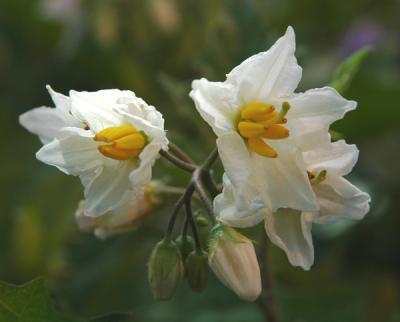What would be the opening chapter of the Kamasutra of plant sex?
A good pick would be a description of the numerous ways in which plants arrange their sexual organs: from both sexes in the same flower to sexes separated in different flowers or individuals.
One widespread sexual strategy that remains an evolutionary enigma is the production of both male and bisexual flowers in the same plant, which occurs in approximately 4000 species. Male (left) and bisexual (right) flowers in horsenettle (Solanum carolinense). Credit: Mario Vallejo-Marin
Male (left) and bisexual (right) flowers in horsenettle (Solanum carolinense). Credit: Mario Vallejo-Marin
What is the advantage of producing these redundant male flowers?
Mario Vallejo-Marin and Mark Rausher, evolutionary biologists from Duke University, report that producing male flowers can make a plant a better mother, in the May issue of the American Naturalist.
The authors showed this counter-intuitive benefit of a "male" strategy through a series of field experiments with horsenettle, a common weed in North Carolina. The experimental demonstration that male flowers can sometimes increase seed number supports a new interpretation that male flowers increase not only male but also female reproductive success.
So what is the mechanism through which male flowers increase female reproductive success?
Such a benefit may arise if resources saved by producing smaller male flowers are reallocated to increased seed production, if male flowers are more attractive to pollinators, or if male flowers remove less pollen from pollinators than bisexual flowers, thus increasing the amount of non-self pollen available for fruit-producing flowers.
Which one of these mechanisms is responsible for the "good mothers" in Vallejo-Marin and Rausher's study? "We don't know yet," says Mario, "but these alternatives could easily be tested through more experiments." Data from an unrelated study indicate that the female advantage of producing male flowers is not unique to horsenettle. To what extent strategies traditionally interpreted as "male" also benefit female fitness in other species remains an open and interesting question.
Mario Vallejo-Marín and Mark D. Rausher, "Selection through female fitness helps to explain the maintenance of male flowers" American Naturalist (2007) 169:563–568. DOI: 10.1086/513112